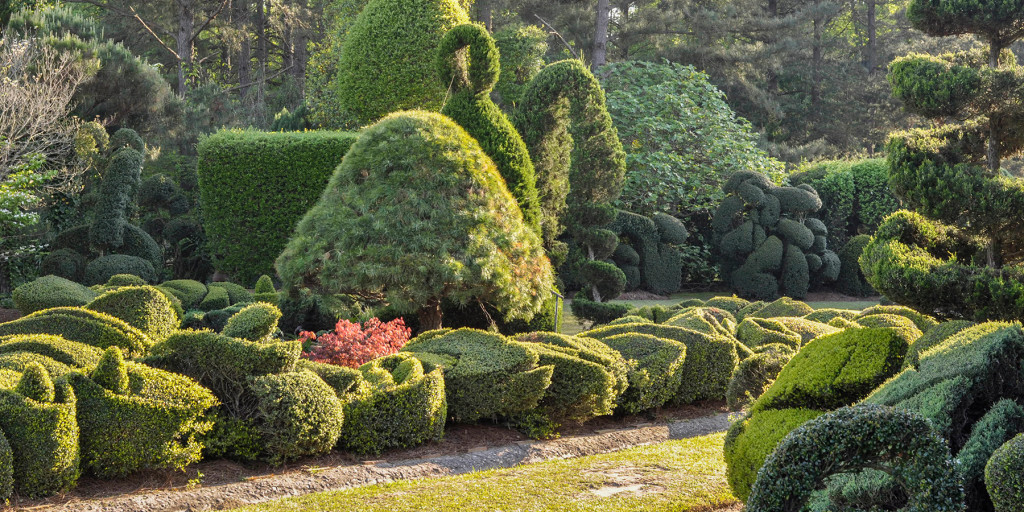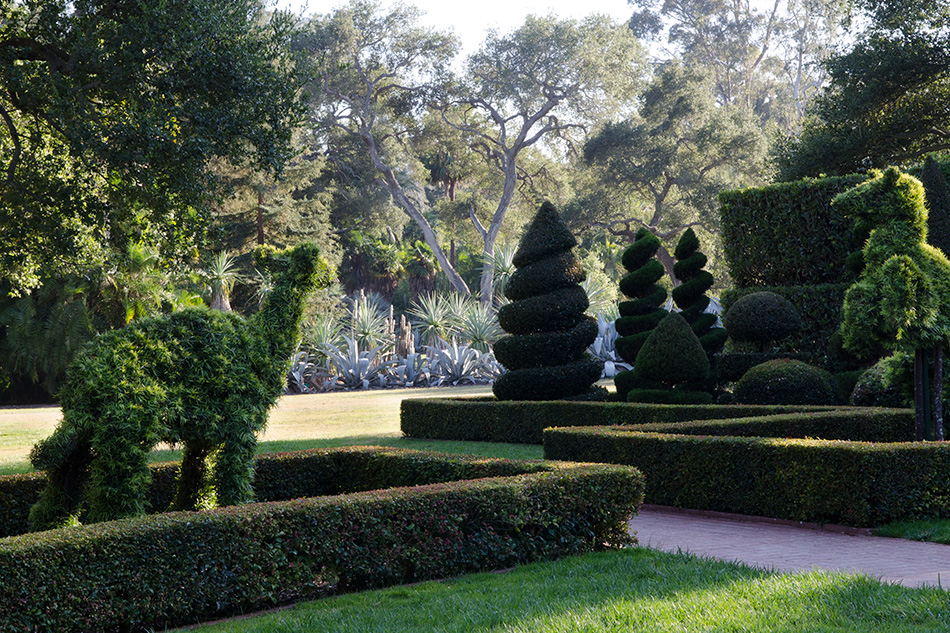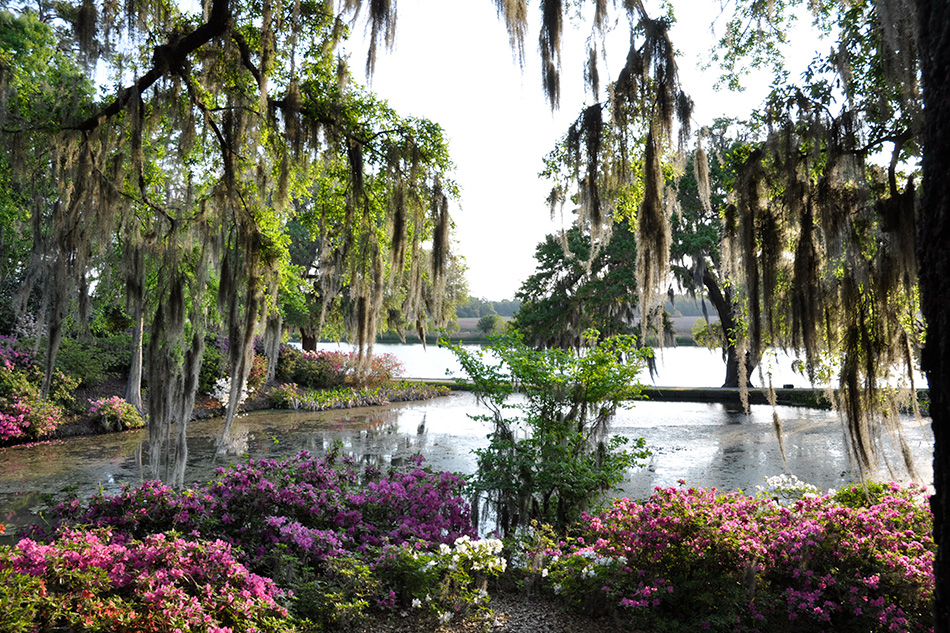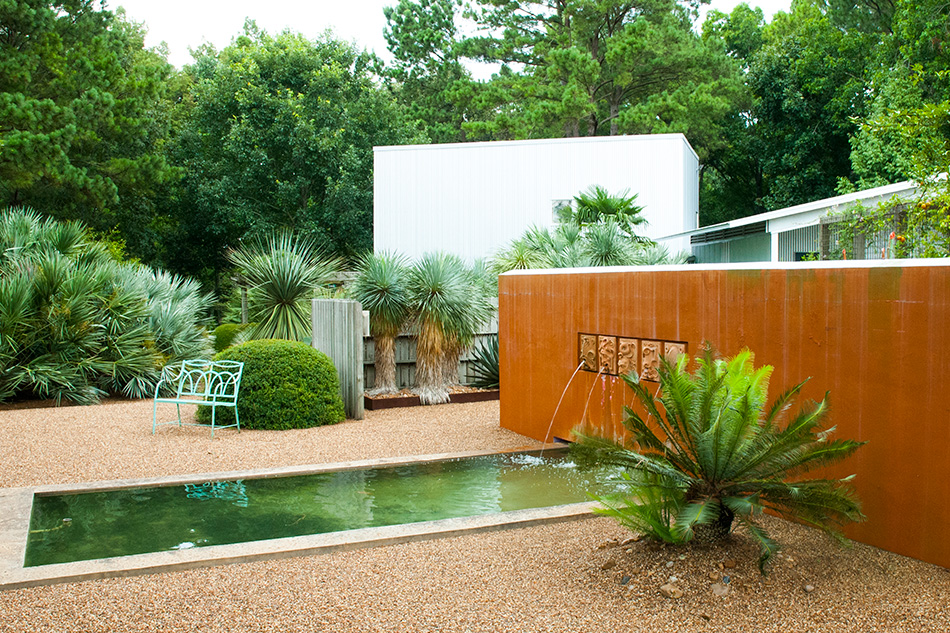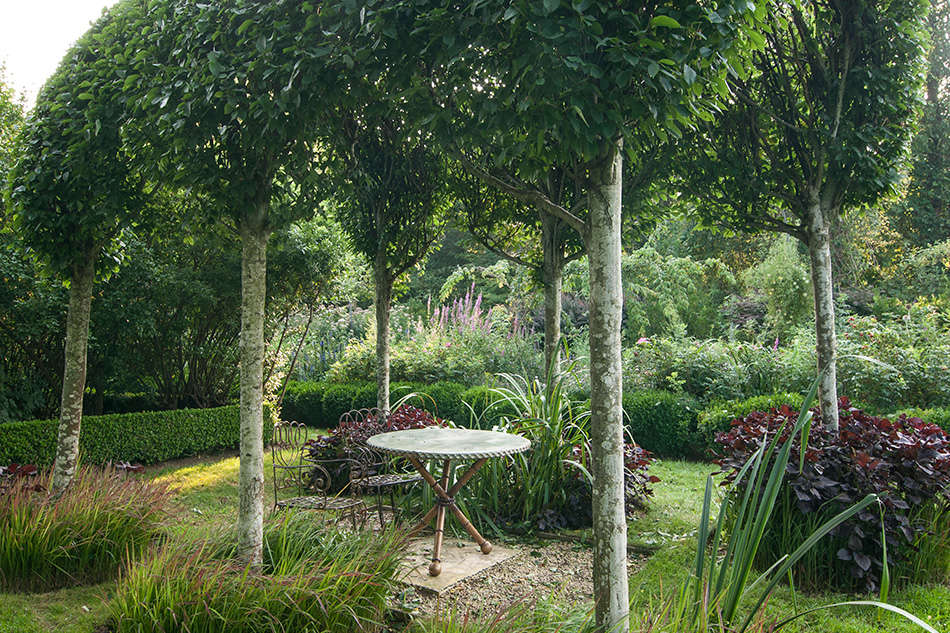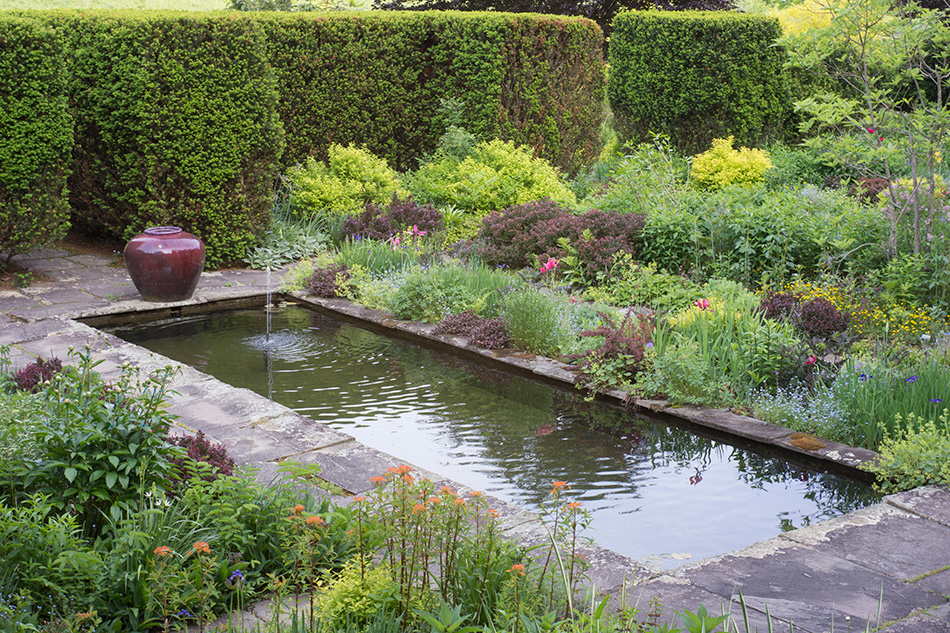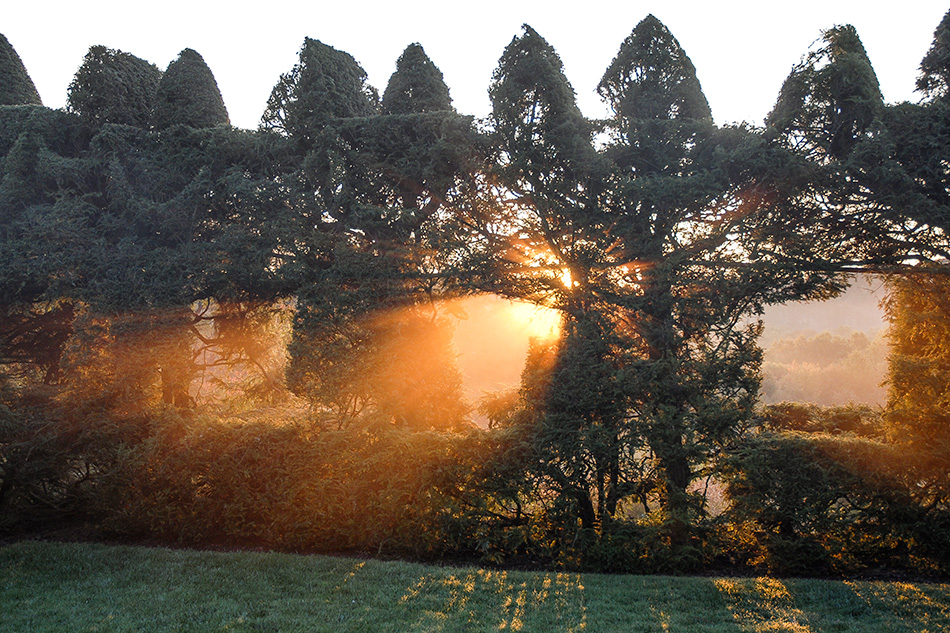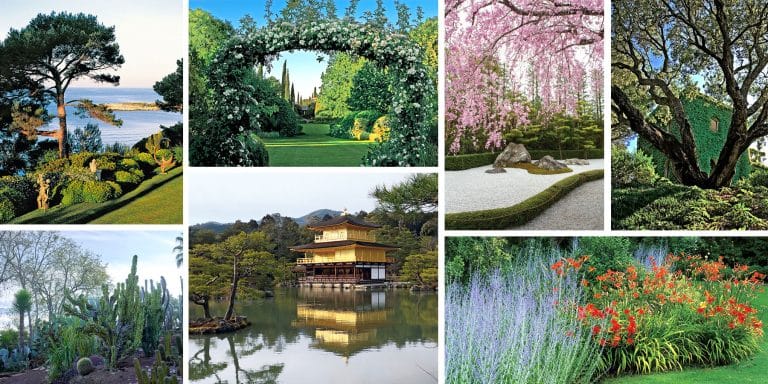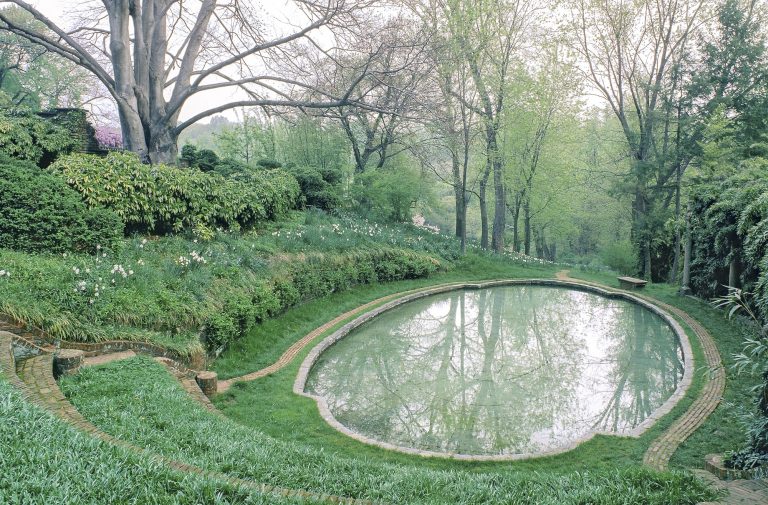
February 22, 2016Caroline Seebohm’s Rescuing Eden describes the restoration of historical gardens across the U.S. that are now open to the public, including Alcatraz, in San Francisco Bay, above. Top: In Bishopville, South Carolina, Pearl Fryar’s three acres of meticulously sculpted topiary impresses visitors from all over the world. All photos by Curtice Taylor, courtesy of The Monacelli Press
As a teenager, author Caroline Seebohm strolled through her father’s gardens in Warwickshire, in England’s Midlands. “He was most proud of his roses, the fancy French ones,” she says. “They gave him great pleasure.” But for the young Seebohm, smelling the roses was among the most boring ways to spend an afternoon. “I would rather have danced to the Beatles.”
Despite her parents’ lifelong appreciation of all things floral — her mother was a gifted flower arranger — it took 30 years and moves to New York City and then Upstate, for Seebohm’s childhood boredom to blossom into both a hobby and a career opportunity.
When she settled into a new house in Ithaca, New York, she finally had a yard in which to garden while working as a contributing writer for House & Garden covering such interior-design luminaries as Sister Parish and Mario Buatta. It was there that she began writing books about design and the decorative arts, and gardens were a natural next step (her Great Houses and Gardens of New Jersey was published in 2003). So when her frequent collaborator, the noted photographer Curtice Taylor, approached her about writing the text for the project that would become Rescuing Eden: Preserving America’s Historic Gardens (Monacelli Press, $50), Seebohm quickly said yes.
“So many garden books are about rich people’s gardens. A book about gardens rescued from abandonment and despair by the people, for the people seemed like an astonishingly democratic project,” she says. “Americans would much rather tear down something old to put up something new. But slowly, they’re realizing that preserving this country’s heritage is terribly important.”
Rescuing Eden visits 17 states to chronicle the revival of 28 gardens, all open to the public, including the formal parterred ones built in 1741 at Middleton Place, in Charleston, South Carolina, and the wildly eccentric Lotusland, in Santa Barbara, California, begun in the middle of the 20th century. Conceived for the most part as private spaces for wealthy landowners, they fell fallow due to war, financial hardship, family squabbles or collective neglect before being revived by those Seebohm calls “heroic” individuals for the enjoyment of the public.

“So many garden books are about rich people’s gardens,” says Seebohm. “A book about gardens rescued from abandonment and despair by the people, for the people seemed like an astonishingly democratic project.”
Here, she talks to Introspective about seeking out a garden’s past glory, the novelty of public green spaces in the U.S. and the delight she now takes in helping things grow.
Define garden design.
It’s another form of artistic expression. Bob Dash was a talented painter, and his Madoo Conservancy, in Sagaponack on Long Island, is a wonderful and crazy masterpiece. With small rooms connected by bridges and pathways, he made a property under two acres in size feel like a hundred.
What’s your favorite garden in the book?
Alcatraz stands out for being an ugly, gritty maximum-security prison on a grim, forbidding island. The inmates transformed this rock into a glorious feast of gardens. Then, after the prison was shut down, it fell into ruin. Local partners like the Golden Gate National Parks Conservancy and the California Horticultural Society helped restore the gardens. They brought humanity back to the land. Now the gardens are a highlight at one of the country’s top attractions.
Do you prefer formal or informal landscapes?
Formal — parterres, Italian statuary and water features — none of it very English. I love Alhambra and the Villa Lante; I admire Le Nôtre for his allées. But I also enjoy Russell Page, his combinations of formal and informal and his subtle use of color. He had such good taste, and I love how he talked about gardens. But then there’s something like the book’s Charles Richards Garden, on the Gulf of Maine, a little oasis of magnificent color and form in the middle of a wilderness. It’s spiritual. There are crashing waves, carpets of moss and clusters of flowers popping up between rocks.
Where were you most surprised?
Lotusland, in Santa Barbara, made the most idiosyncratic statement. You could imagine its designer, opera singer Ganna Walska, performing arias, dreaming up fountains made of shells, throwing another cactus into the mix. I love her for creating the garden and others for saving it.

“It’s spiritual,” Seebohm says of Charles Richards Garden, in Orono, Maine. “There are crashing waves, carpets of moss and clusters of flowers popping up between rocks.”
When did you begin gardening?
I started late. I moved to New York City from England in the 1970s, and ten years later I relocated upstate, to Ithaca, where I had space. There was this little plot of land around my house that said, “Please turn me into a garden.” That’s when I had an epiphany about the magical powers of gardens. Now I live in Titusville, New Jersey, where I have a tiny swath of riverbank and I can plant things, like the three dipladenia plants I recently found in a ditch on the trail by the river where I walk. Landscapers and contractors or disenchanted gardeners sometimes dump things there, though not in a formal composting way. Now the dipladenias are recuperating in my plant hospital at home, and they’re doing just fine. So I’m a rescuer, too, in my own way.
What did you learn from writing this book?
Something seemingly impossible can be done with inspiration, courage, determination and money. The key to rescuing one of these gardens is to dig deep, to figure out how it looked originally and put it back. It’s detective work, like writing a thriller. You use old photos and notes to determine how it might have looked.
How does one properly view a garden?
The best time is early morning or late afternoon. I wear garden sandals and hope that the mud won’t stick to the soles when I go back inside (it usually does). I stand on the terrace, or wherever the garden begins to open up from the house, and take a look. Where my eye first leads me, there I will go. And I don’t pick anything!
